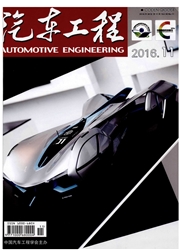

 中文摘要:
中文摘要:
为了提高制动尖叫复模态有限元模型的预测精度,进行台架试验分析和模型改进。首先对3套同型号制动器进行制动尖叫台架试验,并对制动尖叫频率进行统计分析;然后通过计及导向销等部件的影响和修改某些部件之间的摩擦接触关系,对原始制动尖叫复模态模型进行改进;最后对两种模型的不稳定频率预测精度进行对比和分析。结果表明:基于多工况试验的尖叫频率统计分析方法可有效防止制动尖叫试验的“丢频率”问题;而准确考虑制动器各部件的接触摩擦关系,能显著改善复模态模型的尖叫频率的“过预测”和“欠预测”。
 英文摘要:
英文摘要:
To improve the prediction accuracy of complex modal model for brake squeal, both bench test and finite element model modification are conducted. Firstly, three brakes of same model are tested on a brake squeal test bench, and the brake squeal frequencies are statistically analyzed. Then by taking into account the effects of guide pins and revising the contact/friction relations of some components, the original complex modal model for brake squeal is modified and improved. Finally the prediction accuracies of unstable frequencies with both original and modified models are compared and analyzed. The results show that the statistical analysis technique of squeal frequencies based on muhi-conditions tests can effectively reduce the number of undetected frequencies in brake squeal test. And the proper considerations of the contact/friction relations of brake components can effectively diminish the possibilities of over-prediction and under-prediction of squeal frequencies with complex modal model.
 同期刊论文项目
同期刊论文项目
 同项目期刊论文
同项目期刊论文
 期刊信息
期刊信息
